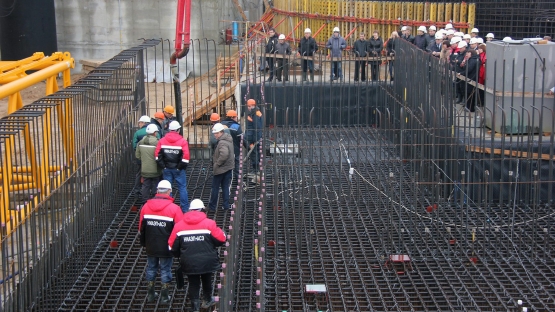Interview with Aleksei Raiman, Senior Counsellor, Ministry of Foreign Affairs, Belarus
Why and how did Belarus decide to include nuclear power into the country's energy mix?
There were plans to construct a 2000 MWe nuclear cogeneration plant and a 6000 MWe nuclear power plant. However, after the Chernobyl accident both projects were cancelled. Currently, thermal power stations are the primary source of electricity in Belarus. As a result, we rely heavily on oil and natural gas imports, mostly from the Russian Federation. The share of natural gas for electricity generation and heating has reached 95%. This significantly affects the energy security of Belarus. Also, unpredictable increases in costs of imported energy pose obvious risks for our export oriented economy.
These were the primary reasons why Belarus, in 2006, decided to consider once again the nuclear option.
The subsequent energy planning activities confirmed that nuclear was a viable and feasible option for the country. The Concept of Energy Security was approved in 2007 and stipulated, among other measures, a plan for commissioning two nuclear power units by 2020. The political decision to launch the nuclear power programme was made in 2008, and extensive preparation activities began, which took almost six years.
In November 2013, Belarus started constructing its first nuclear power plant. What are the challenges Belarus is facing in this respect?
Any country that decides to embark on a first NPP construction project faces numerous challenges related to establishing a robust nuclear power infrastructure. Developing the required infrastructure has to begin long before the start of the construction phase and should be completed by the time when the NPP is commissioned. Belarus is not an exception and still has a long way to go.
One of the vital issues in this regard is developing the necessary human resources. We have adopted a comprehensive, long-term training programme for personnel in the nuclear energy sector. In 2013, this programme was revised with IAEA assistance. The national efforts are complemented by IAEA training programmes and by bilateral cooperation with the Russian Federation and the European Commission.
Many other issues also deserve close attention, including national legislation, effective construction management and efficient public communication.
The IAEA offers a number of services to countries embarking on a new nuclear power programme. Have these helped Belarus during the planning phase?
Belarus has a long and successful history of cooperation with the IAEA. We continue to enjoy this intense cooperation especially in such a complex endeavor as building a national nuclear power programme.
In 2008, the IAEA assisted Belarus in energy planning to support the decision-making process on whether to include nuclear power in the national energy mix. In that year, we also asked the IAEA to assist us in evaluating the surveys of three candidate NPP sites. To facilitate the development of a long-term nuclear energy strategy, Belarus also used the International Project on Innovative Nuclear Reactors and Fuel Cycles methodology in a national Nuclear Energy System Assessment.
While preparing for the NPP construction, Belarus has used the "IAEA Milestones" approach, which proved to be a very useful tool. In June 2012, Belarus hosted an Integrated Nuclear Infrastructure Review (INIR) mission to review the status of its nuclear power programme. The INIR mission team concluded that Belarus was "on its way to being well-prepared with its infrastructure to support the construction of a nuclear power plant". The mission's recommendations have assisted the national authorities in planning future activities and were the basis for a National Action Plan which is now being implemented.


